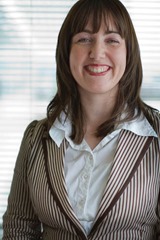Dublin’s living lab
 Aideen O’Hora explains how the Dublin Living Lab provides opportunities for companies to test and innovate by using the city’s infrastructure.
Aideen O’Hora explains how the Dublin Living Lab provides opportunities for companies to test and innovate by using the city’s infrastructure.
In the early 1990s, Lego was considered a goner. It couldn’t compete with video games. But it linked up with Massachusetts Institute of Technology engineers, who transitioned Lego to open innovation. The result? A global ecosystem of users creating new Lego designs. Lego has gone from near-bankruptcy to reporting record profits for nine years in a row.
Innovation in the cleantech sector is essential but companies need to respond to market needs quickly and can’t afford to delay or make mistakes in their R&D processes.
The solution is a ‘living lab’.
The Green Way and its founding partners developed the Dublin Living Lab to support companies in the pre-commercial testing of new technology or services. It’s a collection of public infrastructure – buildings, energy, water and transport networks and street lighting – owned, operated and managed by our founding partners.
This allows innovators to test in a real environment. Users – or potential consumers – try out the technology or service and give feedback, thus helping to shape the new products, services and processes. This co-creation drives innovation and productivity. An added benefit of a living lab is that it allows consumers to identify emerging solutions to address societal and environmental challenges.
An exciting new project, supported by Enterprise Ireland, will further strengthen the living lab. Ten companies are working together to develop guidelines which will show companies, from start-ups and SMEs to multi-national corporations, how a living lab works, how they can access it and how they can benefit.
 These guidelines will support both global cleantech companies and policy-makers who wish to develop national approaches to address challenges such as developing a smart grid test-bed.
These guidelines will support both global cleantech companies and policy-makers who wish to develop national approaches to address challenges such as developing a smart grid test-bed.
One exemplar test-bedding project completed by The Green Way involved testing a new technology for Glen Dimplex. Quantum, a ground-breaking home-heat storage system, uses the latest in smart technologies while reducing use of imported fossil fuels. Glen Dimplex has installed this technology in 140 homes. Dublin Institute of Technology carried out monitoring and verification. Quantum results in approximately 15 per cent energy savings to the homeowner, or 30 per cent in cost savings.
This project, which allows Glen Dimplex to demonstrate its technology, shows how the public and private sectors can collaborate to solve energy and environmental challenges. The project provided Glen Dimplex with a world-class reference site, and showcased Dublin as a smart city and region. More exemplar projects are planned throughout the city.
In brief, the Dublin Living Lab provides a powerful service to industry through provision of a structured that brings users and innovators together, brings in research institutes and enables experimentation with users and exploration of market opportunities. Dublin is fast becoming recognised as a leader in cleantech innovation – partly thanks to the Dublin Living Lab. While public sector bodies can assist economic development, providing unused infrastructure, private companies can test and develop products at very low cost.
Aideen O’Hora is Executive Director of The Green Way. Its founding partners are Ballymun Regeneration Ltd, Dublin Airport Authority, Dublin City Council, Dublin City University, Dublin Institute of Technology, Fingal County Council and North Dublin Chamber of Commerce. ESB and Magnet Networks are strategic partners.





